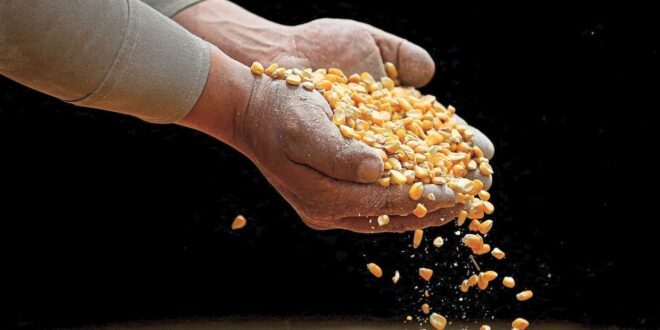SPECULATORS furiously pitched short positions in Chicago corn and soybeans last week just after a big short squeeze in wheat, as pests raid Argentina’s corn crop and rains devastate soybeans in southern Brazil.
Wet weather also slowed the pace of US planting during what is normally the most active period for field work, but top wheat exporter Russia’s main growing region remains concerningly dry.
In the week ended May 7, money managers slashed their net short position in Chicago Board of Trade (CBOT) corn futures and options to 102,513 contracts from 218,040 a week earlier, establishing their least bearish corn view since October.
That represented funds’ largest weekly round of net buying in corn since May 2019, and was substantially larger than any weekly buying seen during last summer’s US drought scare.
The week’s short covering was the heaviest since June 2019, but money managers added more than 26,000 gross corn longs, the most since June 2023 and their fourth consecutive week adding longs.
Most-active CBOT corn futures rose 4.5% during the week ended May 7, but most-active soybeans jumped more than 7% and CBOT soybean meal surged nearly 9%.
Funds’ net buying and short covering of soybeans were both record large figures during the week, surpassing the old highs from July 2017.
The managed money soybean net short plummeted to 41,453 futures and options contracts from 149,236 a week earlier, marking the least bearish soy stance since January.
Almost 28,000 gross longs were added as well, the most for any week since April 2023.
Money managers through May 7 staged their biggest rounds of net buying and short covering in CBOT soybean meal futures and options since March 2020, boosting their net long to 87,991 contracts from 43,596 a week earlier.
The new meal position is funds’ most bullish since December, and it marked the fifth straight week of significant net buying. That stands in huge contrast to the late November to mid-March trend, when funds were net sellers for 15 of 16 weeks.
CBOT soybean oil futures rallied 3.5% through May 7 after hitting contract lows in the prior week, though money managers were modest net buyers, trimming their net short to 65,706 futures and options contracts from 66,882 a week earlier.
Fund movement in CBOT wheat futures and options was also relatively muted compared with the sizable short covering of the prior two weeks.
Wheat jumped 6.5% in the week ended May 7, though money managers cut about 5,500 contracts off their net short, which fell to a 41-week low of 42,360 contracts.
The US Department of Agriculture last Friday published its initial 2024-25 global balance sheets, which project next year’s soybean supplies well above expectations but corn and wheat notably below.
US corn carryout in 2024-2025 is pegged up 4% on the year, less jarring than the 17% jump that was feared just a couple months ago. Stocks-to-use among major global wheat exporters is set for a 17-year low in 2024-2025, but soybean giant Brazil is seen expanding output by 10% on the year to a new record.
CBOT wheat climbed 4% last Friday to settle at US$6.63-1/2 per bushel, the most-active contract’s highest finish since July 31 and well off the year’s low of US$5.23-1/2 set on March 11. Most-active corn notched its highest 2024 settle last Friday of $4.69-3/4 per bushel, up nearly 3% on the day.
CBOT soymeal last Tuesday hit its highest price of 2024 at US$390 per short tonne, but futures fell almost 3% between last Wednesday and Friday. Soybeans fell more than 2% over those three sessions despite a bump from corn and wheat last Friday.
Collectively, CBOT soyoil was unchanged over the last three sessions but got a 4.2% boost last Friday, potentially related to rumours that Washington might impose steep tariffs on Chinese used cooking oil imports, which have displaced US soyoil demand. — Reuters
Karen Braun is a market analyst for Reuters. The views expressed here are the writer’s own.
 BeritaKini.biz Berita Viral Terkini di Malaysia
BeritaKini.biz Berita Viral Terkini di Malaysia





